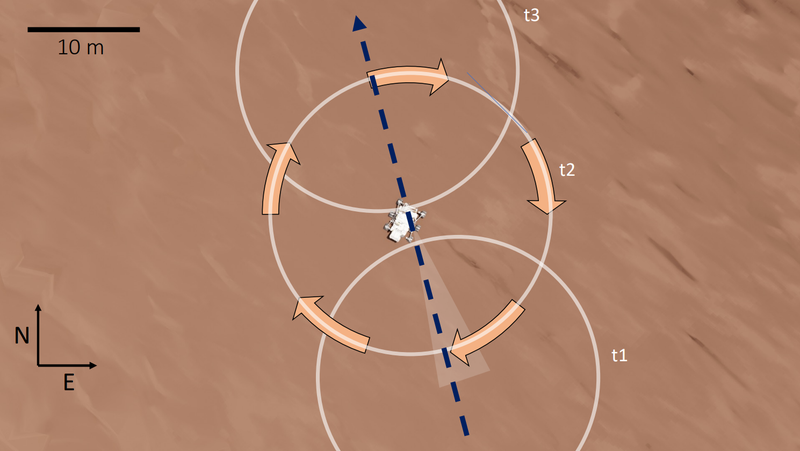Microphone on NASA Rover Records Large Dust Devil on Mars

A graphic of the dust devil’s path over the Perseverance rover.
Researchers working with a microphone aboard the Perseverance rover have managed to record sounds of a passing dust devil. The audio data was enough for them to determine the physical characteristics of the Martian whirlwind, which crossed right over the NASA rover.
The event occurred on November 27, 2021, and Perseverance also took images of the dust devil in question. The team’s research describing the convective, dust-loaded vortex is published today in Nature Communications.
Read more
“The SuperCam microphone was selected to be onboard Perseverance with geological studies in mind (using the sound of the laser to study rock properties),” said Naomi Murdoch, a planetary scientist at ISAE-SUPAERO and the study’s lead author, in an email to Gizmodo. But, Murdoch added, “we were absolutely convinced of the value of acoustic data for atmospheric science investigations.”
The Sound of a Martian Dust Devil
Perseverance has been trekking around Jezero Crater—thought to be a dried-up former lakebed—for the better part of two years, in hopes of finding signs of fossilized microbial life. In that time, it has used a laser to characterize the chemistry of rocks, collected rock samples for eventual shipment to Earth, and imaged the Martian surface.
The rover has also recorded the planet using a small microphone attached to one of its cameras, SuperCam. Jezero is now a big, dusty basin, perfect for Mars’ gusty winds to lift up particulate matter and whip it around the planet. The research team managed to characterize a Martian whirlwind filled with that often-troublesome dust.
“With this dust devil recording we can hear not only the wind but also hundreds of grain impacts,” Murdoch added. “This demonstrates that the microphone can directly observe the process of dust lifting and characterize the conditions under which such lifting occurs.”
Dust devils on Mars on July 20, 2021.
Based on their analysis, the team found that the dust devil was about 82 feet wide and at least 387 feet tall—a massive structure. It took about eight seconds for the devil to pass entirely over the rover. In the audio, the team was able to hear wind from both walls of the vortex, the quiet in the eye of the devil, and the impacts of individual dust grains as they collided with the rover.
Interestingly, the InSight lander—on Mars since 2018 and nearing the end of its life on the Red Planet—has never detected a dust devil from its perch on the other side of the planet. The lander (whose main purpose is understanding the Martian interior through the planet’s quakes) has identified whirlwinds, but none have lifted dust into the Martian atmosphere.
More: What Does Mars Sound Like? The Perseverance Rover Is Going to Find Out
More from Gizmodo
Sign up for Gizmodo's Newsletter. For the latest news, Facebook, Twitter and Instagram.

